Lobelia "Regatta": features of the series and rules of care
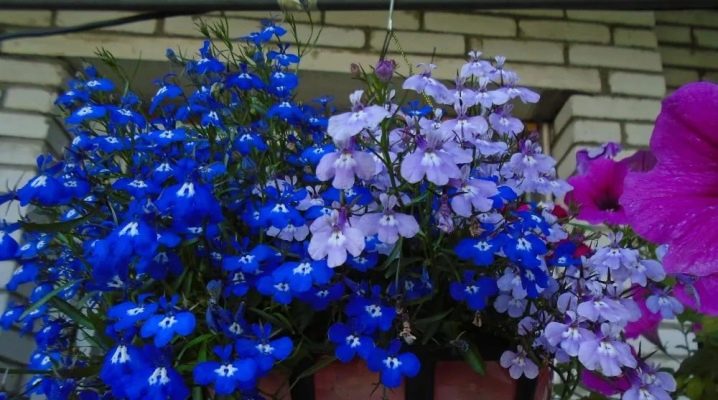
Lobelia is an annual plant, which is a small herbaceous bush of thin green shoots that grow no more than 30-50 cm long. There are various types, including ampelous. Its erect shoots, under the weight of leaves and flowers, gradually descend and branch, thereby creating a flowering cascade. Thin elongated leaves are practically invisible at the time of flowering due to the huge number of small flowers. The duration and abundance of flowering depends not only on the variety of lobelia, but also on timely pruning and pinching.
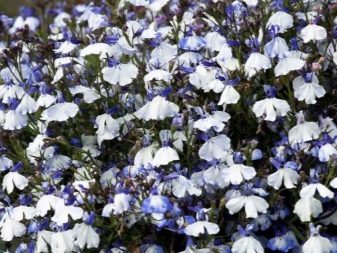
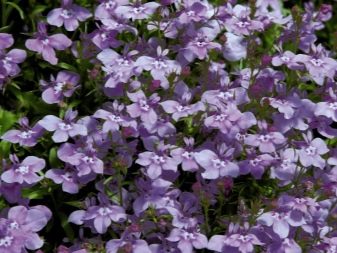
Peculiarities
Flowers of the "Regatta" series are distinguished by an abundance of multi-colored colors, early and long flowering. Their magnificent appearance enchants - the flowering bushes seem to be covered with a white, blue, lilac haze. In general, the most common varieties are with all kinds of blue and purple shades. Keep in mind, lobelias with red or orange flowers do not exist, this is an exaggeration. Unscrupulous sellers can cheat and present beautiful photographs for sale, but at best, such seeds will grow lobelia with white or purple flowers.
Under favorable conditions and proper care, the flowering of lobelia will last from germination to the first frost. The first wave of flowering ends in mid-summer.
It is necessary to carry out a number of measures: almost completely cut the plant (5-10 cm from the ground), loosen the soil and shed it with complex fertilizer. Thanks to this, the plant will resume flowering, which will last until late autumn.
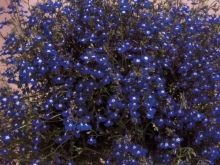

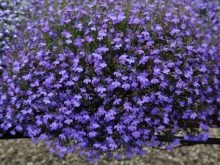
Varieties
There are several varieties of lobelia to consider.
- "Sapphire" - ampelous lobelia with striking blue, sometimes purple flowers. It is distinguished not only by its extreme decorative effect, but also by its early flowering. Long shoots that grow up to 30 cm fall beautifully, creating hanging cascades of small, very bright flowers. Plant height rarely reaches 20 cm, so it is an excellent solution for hanging planters.
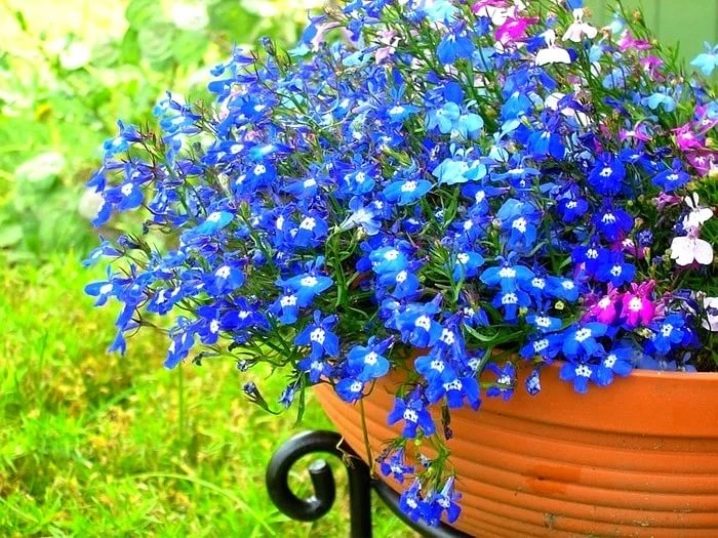
- "Blue splash" Is a cultivar with exquisite blue flowers. Abundant flowering on upright shoots is striking in its early onset and duration. It blooms several weeks earlier than other types of ampelous lobelia.
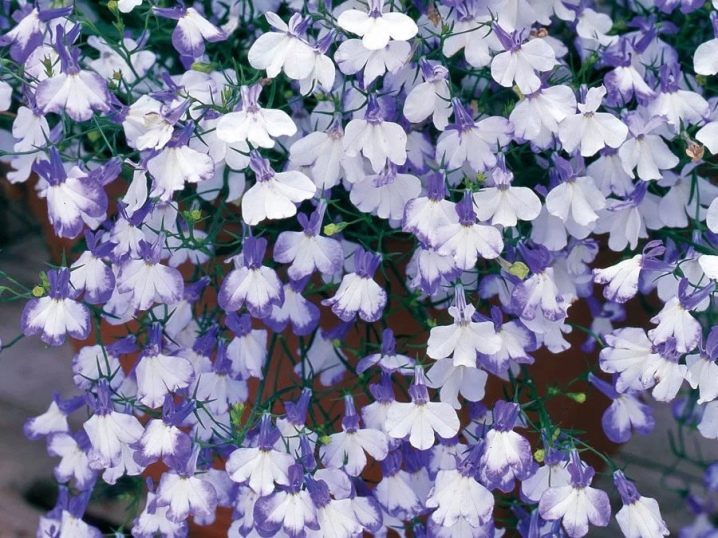
- "Blue sky" - a kind of ampelous plant, which means "blue sky". Indeed, the flower has an incredible blooming cloud of small celestial flowers, emitting all shades and tones of blue. Erect shoots fall under the weight of flowers, creating flowering cascades.
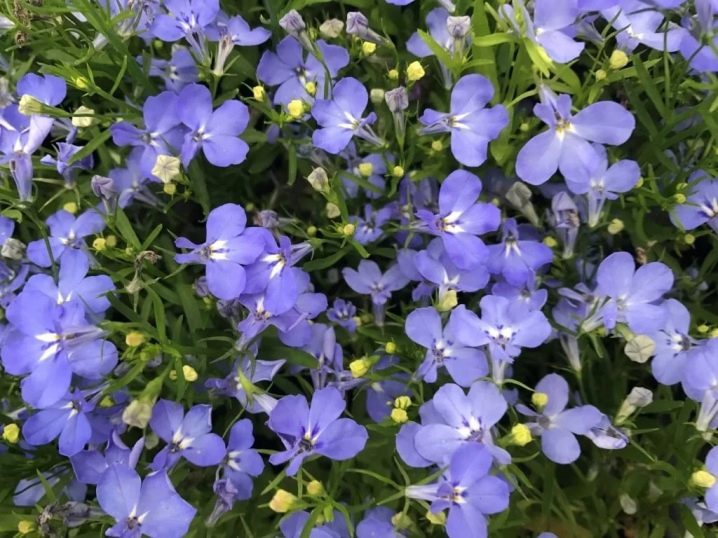
- "Marine blue" - graceful lobelia for ampelous cultivation, with a scattering of blue and blue flowers. The peculiarity of the plant is in its long shoots, which grow up to some point, then, under their own weight, begin to slope down, hang down, creating more and more new shoots. The variety is distinguished by friendly shoots and early flowering.
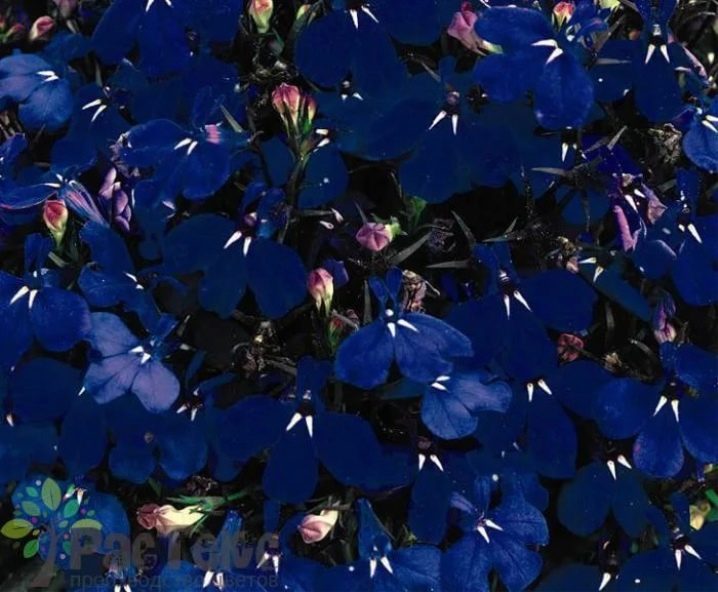
- "Lilak" - ampelous lobelia with a luxurious purple cloud of many flowers on long shoots. It is impossible to find two identical among the buds. Their difference lies in the incredible play of tones and semitones.

- "Midnight Blue" - a variety with a compact spherical bush, which can be well combined with ampelous types of lobelia. In addition, this variety has a dark, rich flowering and goes well with lighter varieties, for example, white or blue.Differs in abundant color, often used in landscape design for border planting.
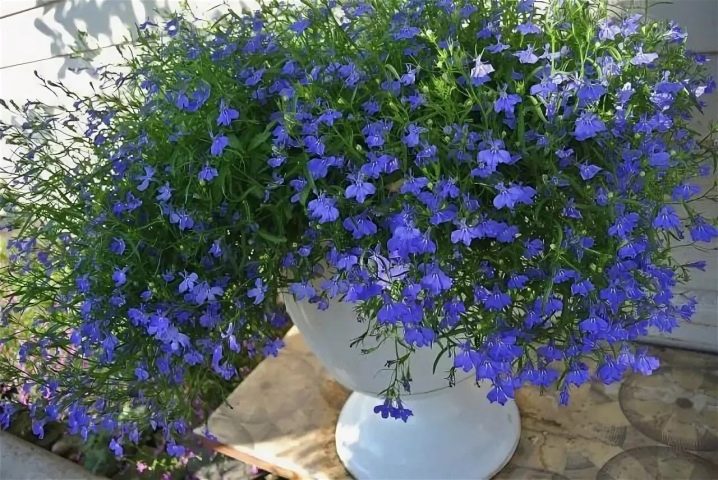
- "Pink waterfall", unfortunately, is a trade trick of manufacturers, and does not differ in bright saturated color. Still, it is a beautiful flowering ampelous plant with lavender flowers. In the dark, their color looks more saturated than in the bright sun.
By the way, this variety has a mix of different colors - from lavender to blue.
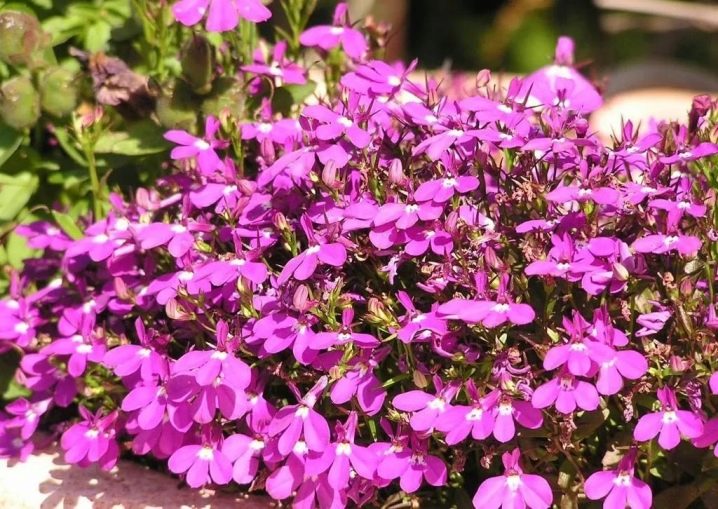
- "Lilac waterfall" - the most prominent representative of the ampelous family. Differs in bright long flowering and all the characteristic features of the ampel variety. At the same time, the lilac flowers of the "waterfall", unlike other varieties, reach rather large sizes - about 2 cm in diameter, which is a rare occurrence for this species.
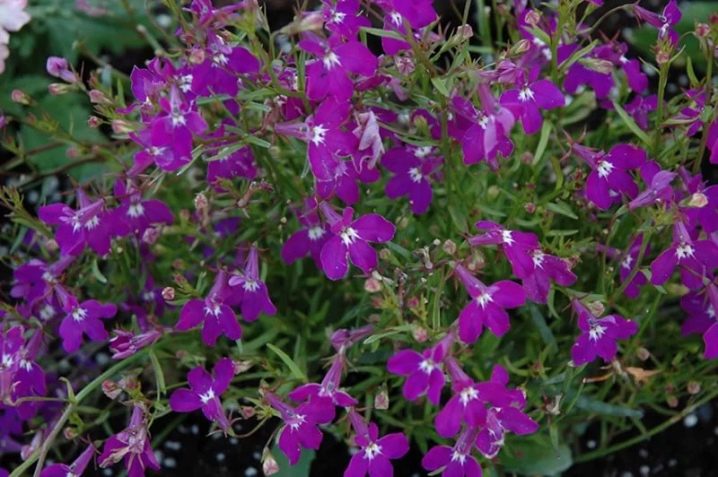
Planting and care rules
Lobelia is grown by seedlings or direct planting in the ground. In fact, it can even spread by self-seeding. It should be borne in mind that when planted in the ground, flowering will begin only in the second half of summer. In addition, germination will be much worse than when planting in a bowl for seedlings, since the seeds of lobelia are very small, like dust.
Seeds on sale can be presented in bulk or granules, which contain 5-7 seeds and are covered with a special bright shell, which facilitates planting. Just imagine, one gram contains about 50 thousand seeds, so the main task when planting is the correct distribution of seeds over the surface of the earth.
It is necessary to prevent thickening of the plantings, because densely planted flowers are strongly stretched, weaken and die. In addition, at the initial stage, it is almost impossible to transplant, the shoots are extremely thin and delicate, it will not be possible to separate them one by one and transplant.
The favorable period for planting lobelia is February-March, in this case, by the time of planting in the summer cottage, the shoots will already get stronger and will have a rather hardy root system. Planting in separate pots requires free space on the windowsills.


The soil for planting will require nutritious and lightweight. Placed in a container, it is slightly crushed and spilled with a weak solution of potassium permanganate. The seeds are placed neatly over the surface. Experienced summer residents advise using a white thick sheet of paper folded in half, with sprinkled lobelia seeds for this - this will minimize the risks of dense planting.
The seeds are not covered with earth, they are only moistened with warm water from a spray bottle and covered with a transparent film. The container is installed in a warm place until young shoots appear. Usually lobelia shoots appear quickly and amicably, you will have to wait no more than 10 days. If the planting has been done too dense, you can see a thick carpet of seedlings.
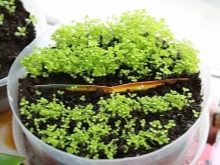
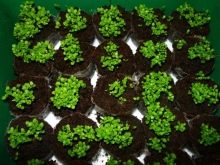
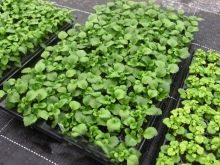
When the plants grow up a little and the first true leaves appear, they are picking into separate pots. It is recommended to transplant not one plant at a time, which is almost impossible without the death of most shoots, but in small bunches that are separated with an earthen lump and placed in a separate pot. Such a bush, growing up, will be lush and healthy.
With such a transplant, the strongest sprouts win, begin to grow actively, oppressing smaller "comrades-in-arms". If the transplant is carried out according to all the rules of picking, replanting each plant in a separate pot, the seedlings can freeze for a long time and bloom later.
Lobelia grows up very quickly, sometimes the first flowers appear at the seedling stage. Of course, these still modest sprouts do not show the sufficient beauty that lobelia acquires when planted in open ground.
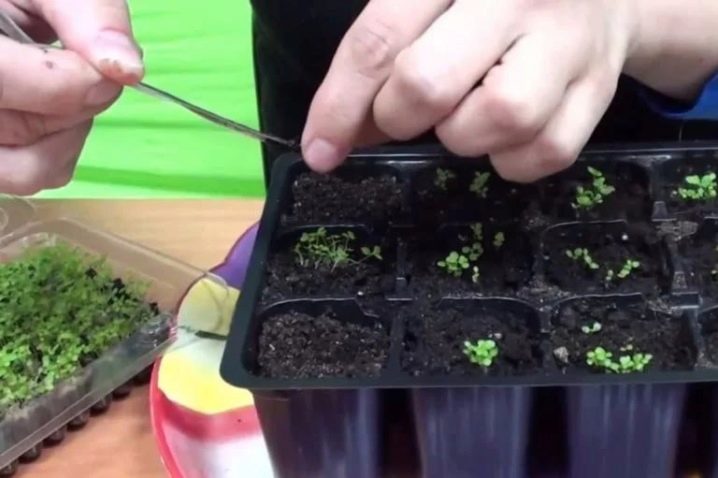
Plants are transplanted to a permanent place when the ground is thoroughly warmed up and the threat of recurrent frosts has passed. When transplanting, you must save the distance between seedlings is at least 20 cm, as the plant grows strongly. A place for an ampelous bush must be selected clarified, with well-drained soil, partial shading is possible. Well-drained, light fertile soil and the absence of drafts are probably the main conditions that should be adhered to when planting "bundles" of lobelia.
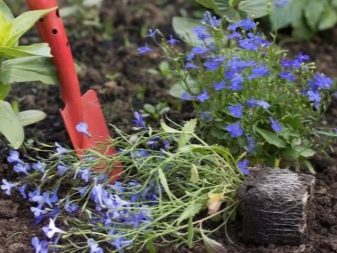
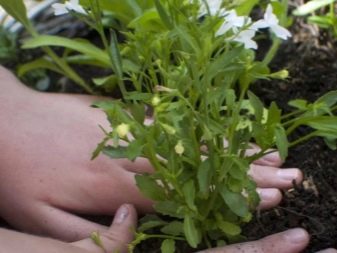
For information on how to properly grow and care for lobelia, see the next video.





































































































The comment was sent successfully.